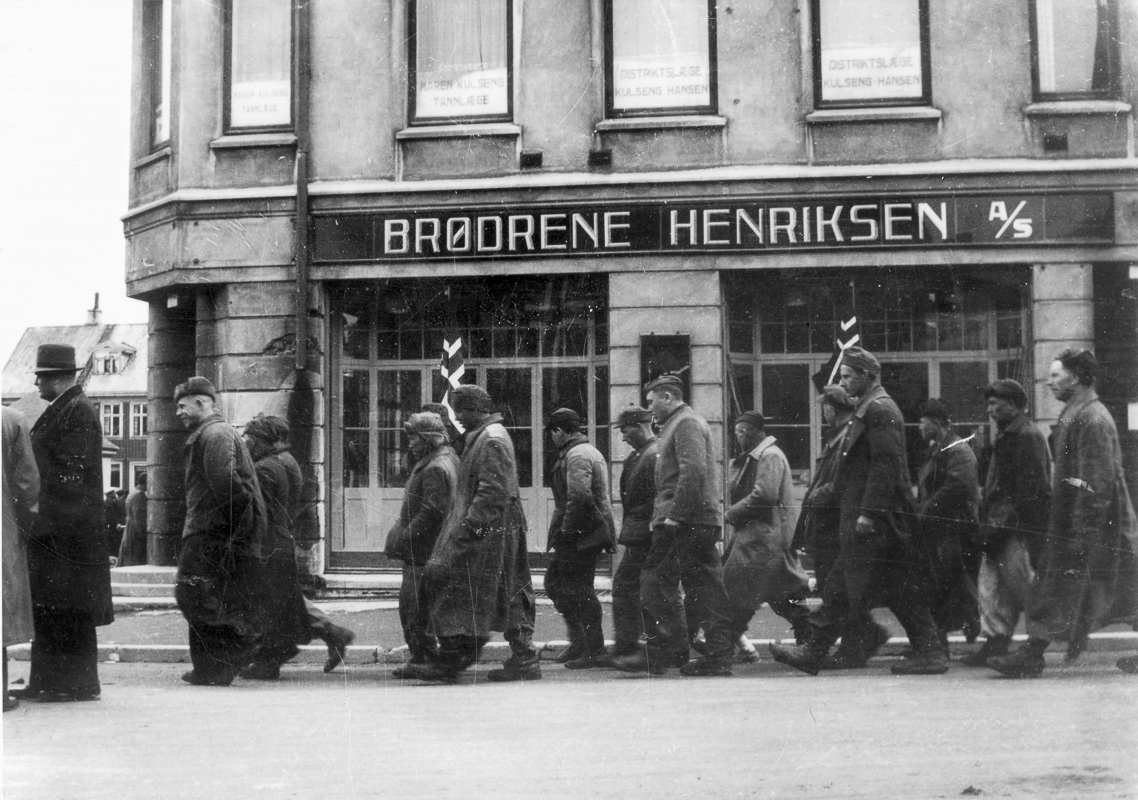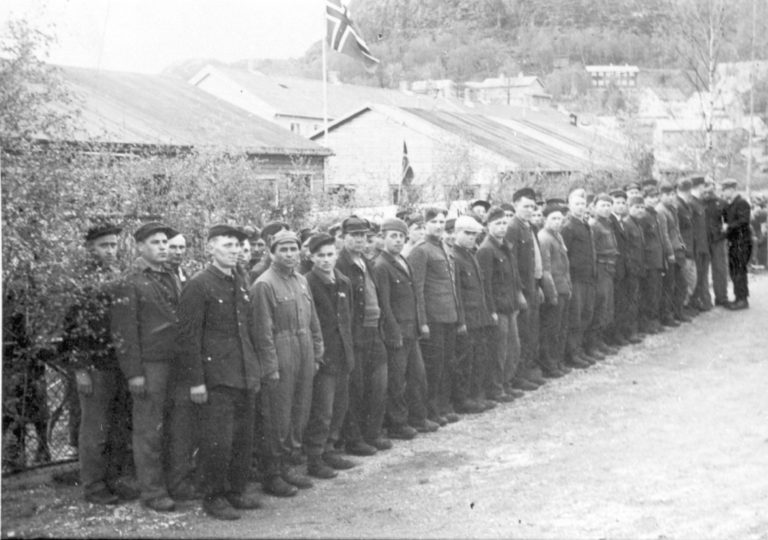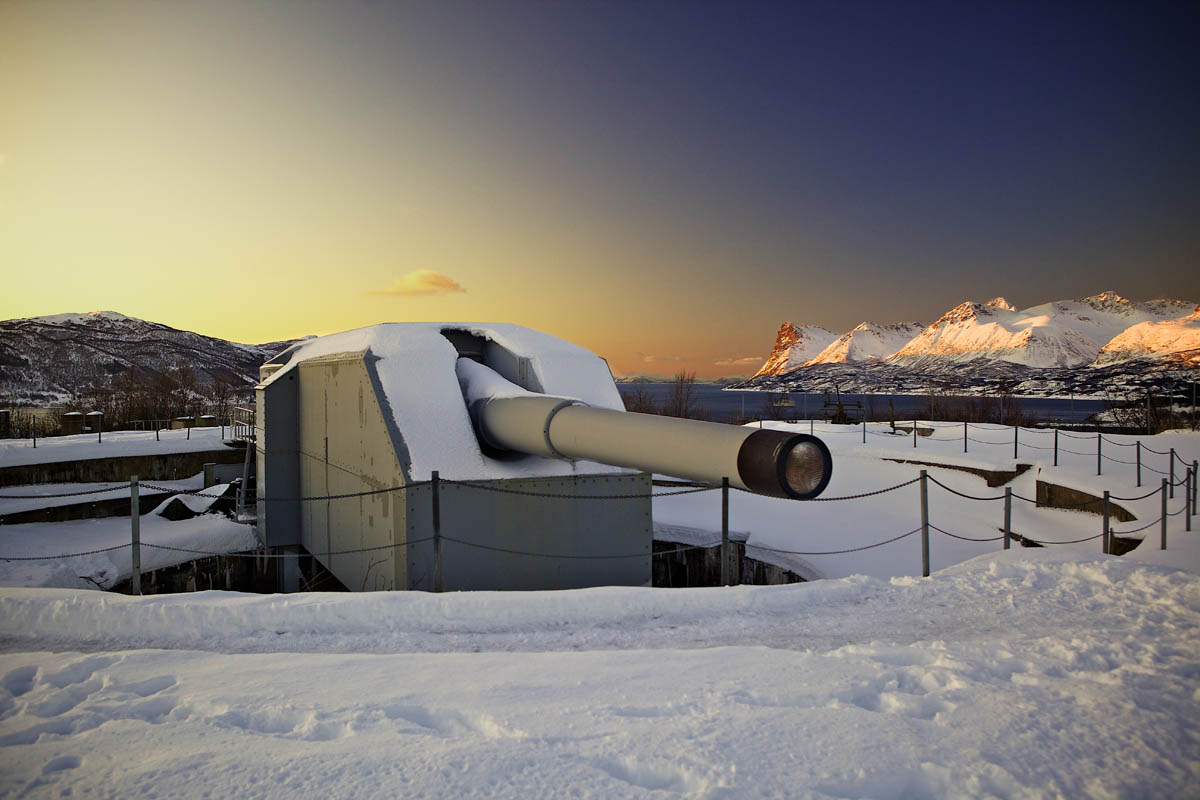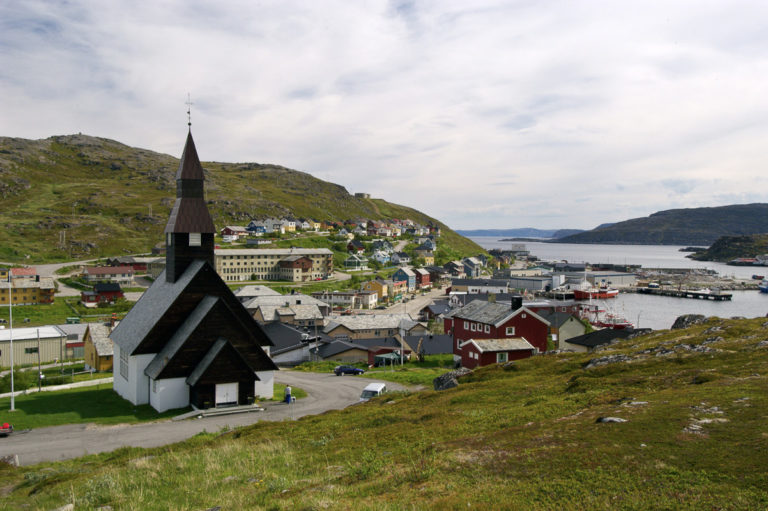World War II was a monumentous tragedy. Perhaps 75 million people lost their lives. Of the nearly six million Soviet soldiers captured as prisoners of war during World War II, 57% died (well over three million). An estimated 100 000 prisoners came to Norway, of whom ± 13 700 died. The numbers are staggering and difficult to absorb. The Trondenes Historical Center gives us a chance to get behind the numbers and get a first-hand look at the history of the prisoners of war. One of those 13 700 victims kept a diary. A personal and terrifying war story is told in the diary.
Konstantin was sent to Trondenes to die
Konstantin Grigorivich Seredintsev was 31 years old when he was captured at Krasnodar in southern Russia in August 1942. He was an accountant, married, and had two young daughters. He was sent to a prison camp near Trondheim from a camp in Poland. He began writing a diary upon arrival at the prison. He was then sent to the camp at Trondenes in February of 1943. His arrival was shocking;
There are summer barracks that look like horse stables. They are dirty, damp and cold [..] it is obvious to me that we have been brought here to die.
Konstantin was right. He came to Trondenes on 23 February 1943 and died on 22 May that same year. We must assume he died after being overworked and receiving far too little food. His death is thus a war crime.
100 men lived in each hut
The prison huts at Trondenes had concrete floors, but the rest of the hut was a simple plywood construction. The size of each hut was 15 x 6 meters, and an estimated 100 prisoners were housed in each. That is, each had less than one meter of floor space. The prisoners lay in bunk beds with their legs against the walls to make room for all the others, and there was no heating. There was a toilet hut, and a bakery was eventually built.

Konstantin worked ten-hour night shifts
A picture in the exhibition at Trondenes Historical Center shows this work. A man is standing at the bottom of a pit digging. One man digs the gravel and loads it up to another shoveller one level up, and the fourth shoveller puts the gravel in a cart. This is how they stood for ten hours a day. Konstantin writes
The work is not heavy, but there is a lot of it [..] so I have given up hope that I will survive until the end of the war and be released from this cursed slavery and captivity
He worked from seven o’clock in the evening until five o’clock in the morning. Digging went on around the clock. Digging, shovelling snow, unloading ships and other hard physical work were all a part of his chores.
“I fed my pigs at home better”
Konstantin describes a breakfast soup of boiled water thickened with a little flour, worse than the food he used to give his pigs at home. The dinner was a third of a kilo of bread, 25-30 grams of fat and 75 grams of canned fish, as well as a small bowl of coffee. The evening soup is described as made from waste. German doctors focusing on the high death rates prepared a report in the spring of 1943 asking for increased rations. The prisoners then received 350 grams of bread, 700 grams of potatoes and 140 grams of meat a day. After this, mortality dropped significantly.
General impairment and circulatory failure were the most common causes of death
Konstantin wrote that his physical strength began to fade after ten days at at Trondenes.
I walk slowly and drag my feet behind me
According to his prison card, the cause of death was impaired general health and circulatory failure, which is the most common cause of death along with heart failure and diarrhea. A cause of death like this is usually associated with impairment in old age and is very unusual for healthy young men. Mortality in the camps was very high, which can be directly attributed to working conditions and diet.
There may have been up to 1300 prisoners of war at Harstad at the worst point
The first fifty prisoners of war arrived in Harstad just a few months after Hitler’s attack on the Soviet Union in the summer of 1941. In 1942, construction of the fortification at Trondenes began, and the need for labour increased. We know of 4 prisoner transports by ship from Szczecin in Poland (which was then the German Szczecin) via Oslo and Trondheim. Konstantin writes
We were driven down into a small, damp hole as if we were cattle or something worse.
There may have been 1200 prisoners in the Trondenes camp while construction was at its most intense. Around 100 also come from smaller camps in the region.
The inhabitants of Harstad were forbidden from entering the labour camp
Most people were not allowed to have any contact with the prisoners. The prisoners could sometimes be seen when they were put to work outside the camp. They were marched through the city at times. One could be punished for helping the prisoners with food, such as a maid at the nearest farm who received two months in prison. A certain understanding eventually grew as the guards ignored children who approached the camp and pushed lunch bags under the barbed wire fence.
The construction of the gun battery at Trondenes
Vågsfjorden, near Harstad, is the northernmost entrance to Tjeldsundet and one of two roads leading to the shipping port that brought Swedish iron ore to Narvik. After the Allied raids in Lofoten in March and December of 1941, the occupying forces wanted to prevent the Allies from blocking important ship traffic from Narvik. They built a fortification with large cannons at Engeløya in Steigen to secure the southern entry, and at Trondenes to secure it from the north. The construction of the huge cannons required digging and foundations, and a lot of manpower was needed here.
Operation Todt was Hitler’s construction organization
Fritz Todt was Hitler’s Minister of Armaments and responsible for building the fortifications. His main instrument for this job was Operation Todt, designed to build key wartime infrastructures in Germany and in the occupied countries. An important part of their activity was organizing slaves and slave labour. The Wehrmacht, the German military power, had the task of guarding the prisoners.
The Atlantic Wall was intended to protect against an Allied invasion
The fortifications at Trondenes were part of a much larger plan, the Atlantic Wall. Bunkers, minefields and barbed wire barriers were laid out and built from eastern Finnmark to the border between France and Spain, and large cannons were set up. Today, the concrete is crumbling along the entire west coast of mainland Europe. These fortifications were largely built by Soviet prisoners of war and those who were forcibly expelled from the occupied territories.
A monument was erected immediately after the war
Old photos show us that the area between the camp and the cemetery wall was used as a war cemetery. Russian Orthodox wooden crosses stood here. The Soviet Union was an atheist state, but Stalin also mobilised religious forces from Soviet society in the war effort. A monument on the north side of the cemetery wall, made of black stone, has a Soviet red star on top. It was erected in the weeks after the liberation. The liberated prisoners of war marched through Harstad on 22 June 1945. A military marching band played while the mayor, the Red Cross and the representatives from Norwegian Defence gave speeches when the monument was unveiled. The Soviet soldiers received a warm farewell from the city where they had suffered so much, and everyone was willing to take care of the war cemetery.
Operation Asphalt moved the graves out of Harstad
The remains of 403 prisoners of war were exhumed in the autumn of 1951, put into asphalt bags and sent to a centralised war cemetery for all the deceased Soviet prisoners of war at Tjøtta on Helgeland. In Harstad, as in many places in Northern Norway, the reactions to the move (called Operation Asphalt) were quite negative. The people felt they made a promise to care for the graves. Today we like to see the relocation of the graves in connection with the Cold War. One did not want suspected Soviet spies looking around, under the guise of visiting war graves. The remains from 403 people were otherwise moved, while the monument states the number as 800 dead. Today we are not sure how many actually died.
Ties were cut and retied again
The Cold War came not long after World War II. All contact with the Soviet Union ceased; no soviets were allowed to enter Norway to see the graves, and exchanging letters was almost impossible. Although the focus of public debate changed, the story of the prison camp at Trondenes was well known in Harstad. With the political thaw of the nineties, new ties were formed and in 2002 the eldest daughter of Konstantin, Tamotseka, and his granddaughter Vitaly, visited the prison camp at Trondenes.
What does the camp look like today?
In 1946, the poorly built huts were simply burned. They were full of bedbugs and stood in the middle of the town. Bushes and small trees eventually grew in the area, making the prison camp invisible and inaccessible. For several years, however, the South Troms Museum, with good help from the Rotary Club and other volunteers, cut away the brush and trees to expose the remains of the huts again. There are also remains of a stone house and what may have been a baking oven. The landscape is frequently cleared of brush by the South Troms Museum, so it is possible to get a feeling of what life was like there.
How can I follow in the footsteps of Konstantin?
Dealing with the horrors of World War II is demanding and valuable for all of us who live today. We recommend first visiting the Trondenes Historical Center, which with Konstantin’s help tells us what happened at Trondenes during World War II. There are nice guided walks through the cultural landscape around Trondenes during the summer holidays. The war cemetery is a key spot to visit. You can also go on your own using our article. It takes a lot of imagination to imagine what the camp was like, but a large photo with poor resolution gives an impression of a prison tower, the huts and barbed wire fences in the exhibition.
About Trondenes Historic Centre
Trondenes Historic Centre has comprehensive exhibits about archaelogy, about Viking and the Middle Ages. They do, however, also have an exhibit about the prison camp from the second world war. You can see the remnants of the prison camp a few minutes north of the Centre, just north of the church.
Trondenes is found on the outskirts of the city of Harstad. You can walk there in 45 minute’s time from downtown. There are also buses, and the tourist information in town has all the timetables necessary. They also hire out e-bikes, allowing you to spend a whole day going from one attraction to the other. Finally, there is good parking outside the museum.
Indeed. The Trondenes Mediaeval Farm is just outside the museum building. A few minutes’ walk away is the Trondenes church, dating from 1200-1460, with a rich interior. The Adolf Gun is one of the biggest guns ever made, and is found within the military area further up. Ask the tourist information for access possibilities. Finally, there is an easy historic walk from the church and the prison camp passing several historic monuments ending in Altevågen.
The local visitor’s organisation, Visit Harstad, informs comprehensively on their website about all attraction, activities, lodging and dining.
















